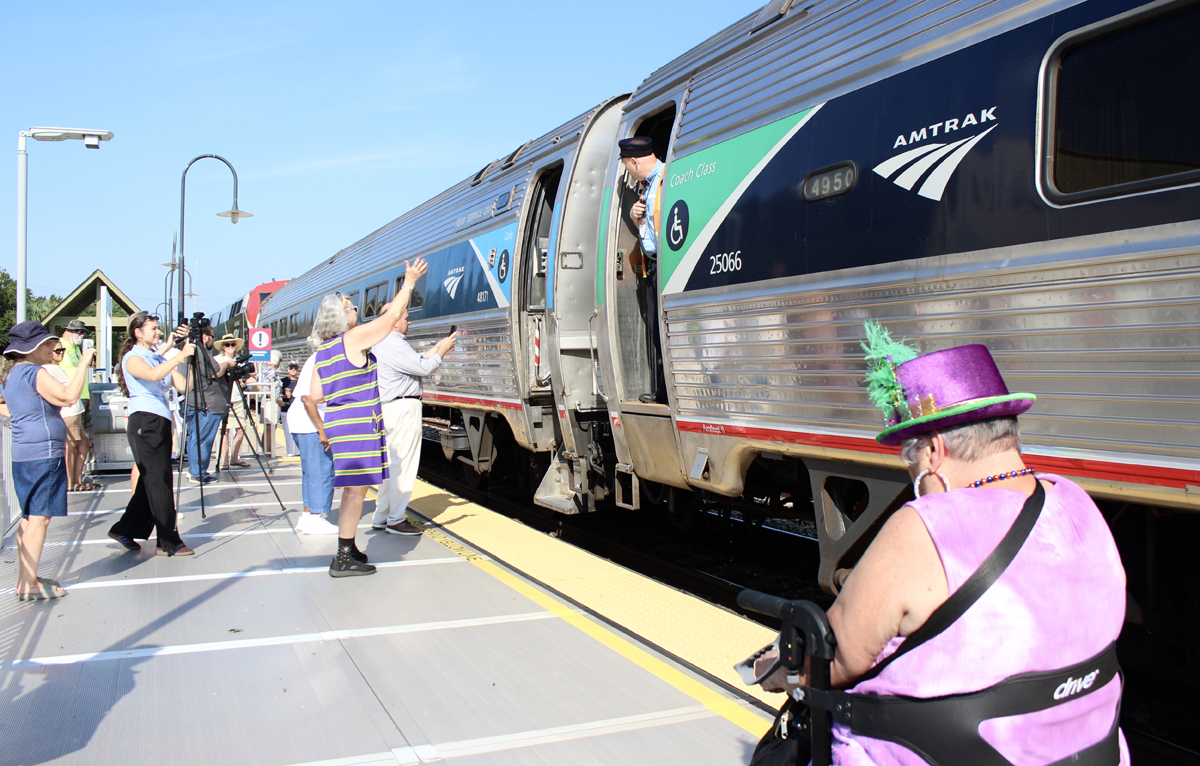
BAY SAINT LOUIS, Miss. — Perhaps no community along Amtrak’s Mardi Gras route has been more enthusiastic about the launch of the two daily round trips than townspeople at the first stop east of New Orleans.
So on Monday, Aug. 18, 2025, the first day of revenue service, it was not surprising a crowd showed up to greet the first eastbound and westbound Mardi Gras corridor trains. A total of 25 station hosts have signed up for volunteer duty to answer questions from first-time riders and promote the service. Many were among those on hand.
The schedule is designed so New Orleans-bound train No. 23 gets to Bay Saint Louis at 8:40 a.m., then meets No. 24 for Mobile several miles west of the station at the long Nicholson passing track. No. 24 is set to arrive at 8:57 a.m. if all goes well; a similar meet occurs at Nicholson for afternoon trains 25 and 26.
In the morning, at least, that didn’t happen. Fifteen miles to the east at Gulfport, Miss., a tractor-trailer driver ignored “low ground clearance” warning signs and hung up his big rig on CSX tracks near the station. Fortunately, the blue Emergency Notification System sign there enabled bystanders to call the railroad and stop all train traffic, which included westbound No. 23. It took 45 minutes to extricate the truck from the crossing; the delay was maintained into Bay St. Louis.
The route has few passing sidings, so it made sense to hold train No. 24 at Nicholson, where it could theoretically proceed east immediately after No. 23 passed.
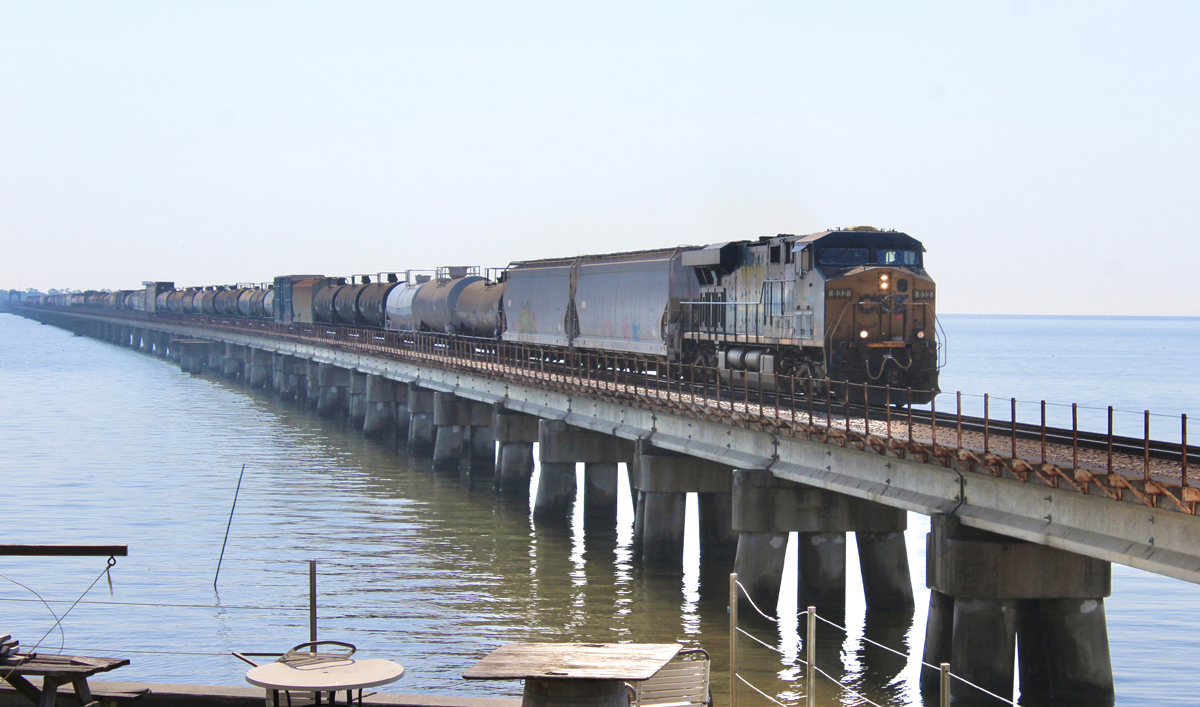
That wasn’t what CSX had in mind. The Mobile-bound passenger train lost an additional half hour waiting for a slow westbound freight that had followed No. 23 out of Gulfport. With one unit, it wasn’t one of CSX’s Precision Scheduled Railroading “non-fitters” — a train too long to fit in any passing track. The previous afternoon, before the Mardi Gras started regular service, Trains.com witnessed an approximately 206-car assemblage heading east.
A ”passenger train priority” dispatching decision would have put the westbound merchandiser into the siding at Harbin, about 6 miles west of Gulfport. That passing track is long enough accommodate this freight; two long CSX trains were spotted passing there in 2021.
Federally funded infrastructure improvements along this route as part of a settlement that remains confidential have not been implemented, and Amtrak chose not to pursue a Surface Transportation Board finding about what does and does not constitute “passenger train priority.” In fact, Trains.com learned on the Mardi Gras inaugural trip that the STB has disbanded its “passenger train desk” that was meant to handle complaints.
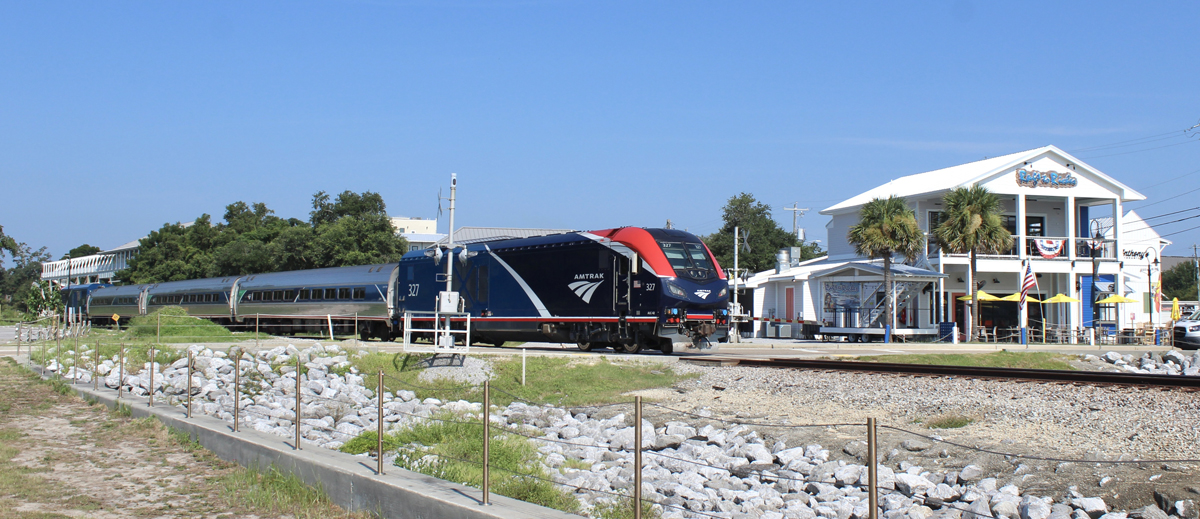
There may be reasons why the freight didn’t take the siding at Harbin; past efforts to try to pry that kind of information out of a railroad have been unsuccessful. But this was a documented instance of making a passenger train wait when CSX had another option. Is this a case of simply not being able to adjust to four new passenger trains? Or was it making a point about CSX’s position during the fight to launch service, which included a consultant-certified demand for more than a billion dollars in route improvements? The route had little traffic the rest of the day — or any previous day.
How CSX performs over the next few months will provide the answer. Triggered by the crossing incident and the delays that followed, the morning train to Mobile took advantage of some recovery time in the schedule and arrived only 34 minutes late, while the No. 23 held at 46 minutes late into New Orleans.
Some news outlets made a big deal about the morning delays, but the trains’ performance improved markedly for the evening Mardi Gras counterparts: No. 25 was 15 minutes early into New Orleans and No. 26 was 3 minutes early into Mobile. Though short, the trains were full. Now comes the challenge to keep them that way — in part by running on time.
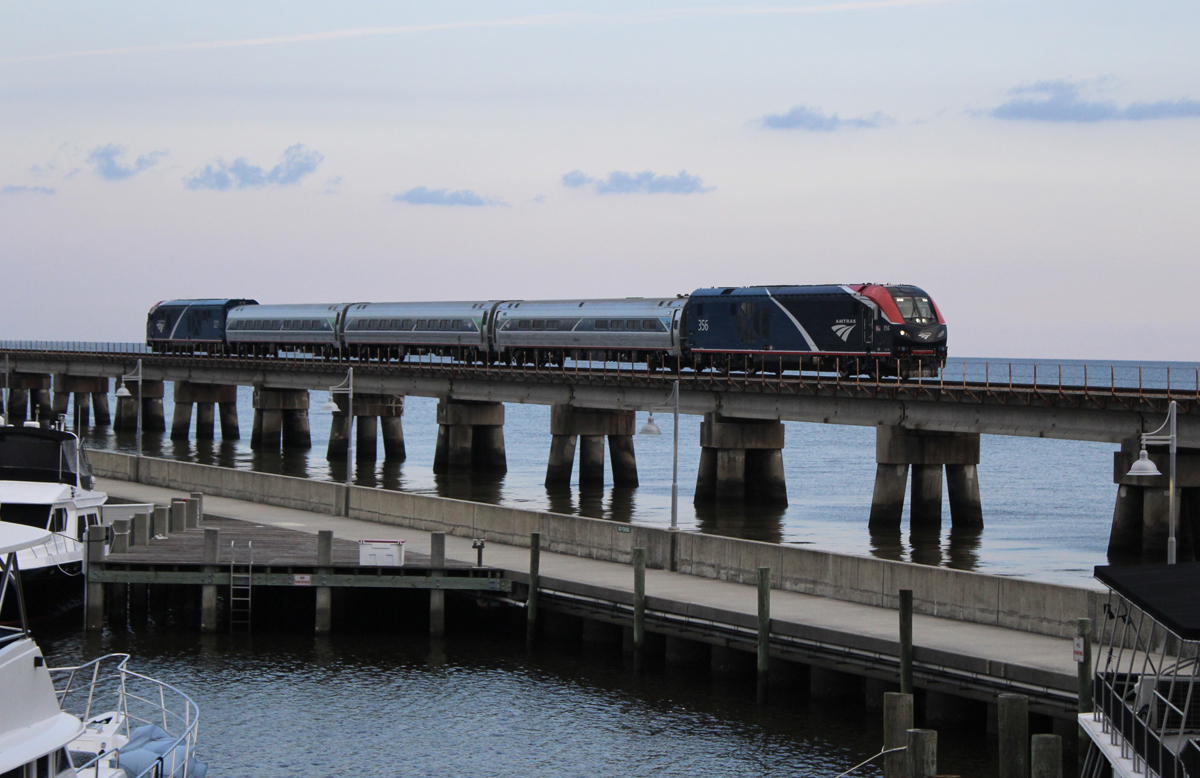






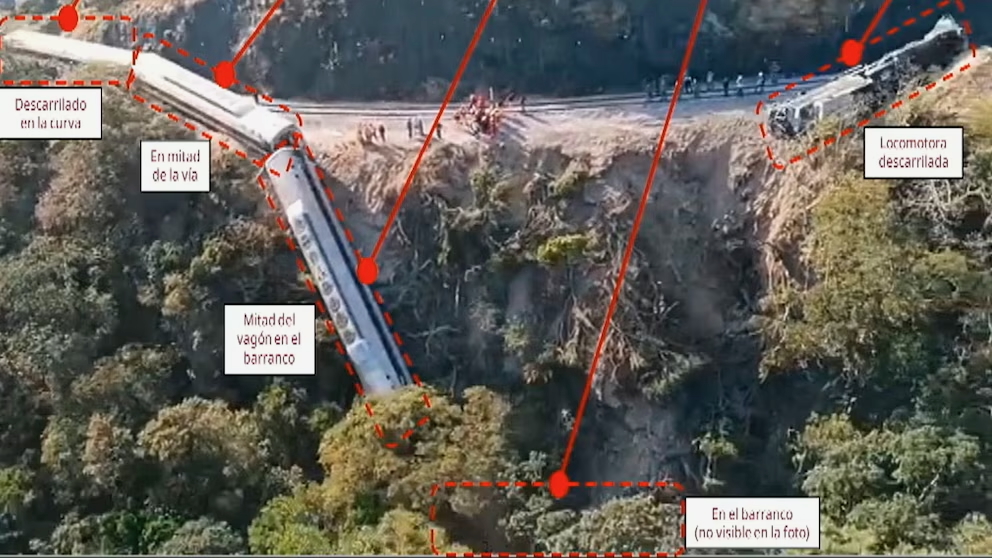
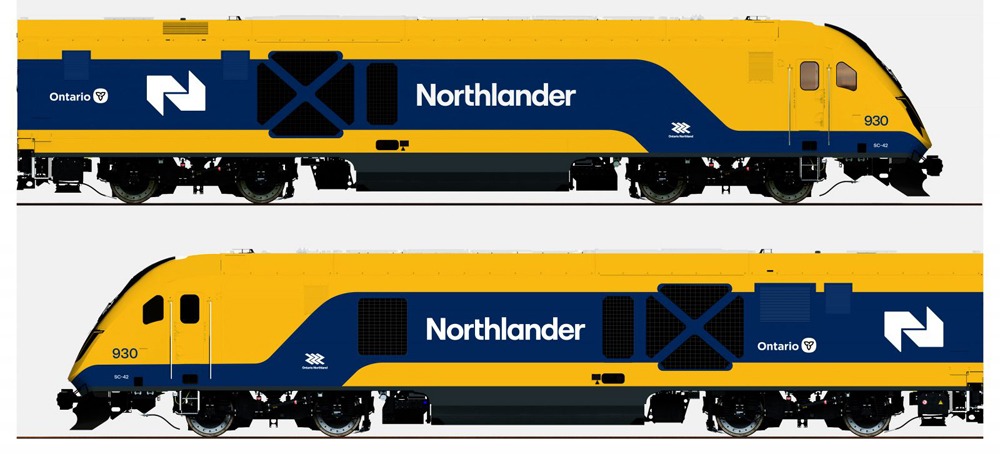

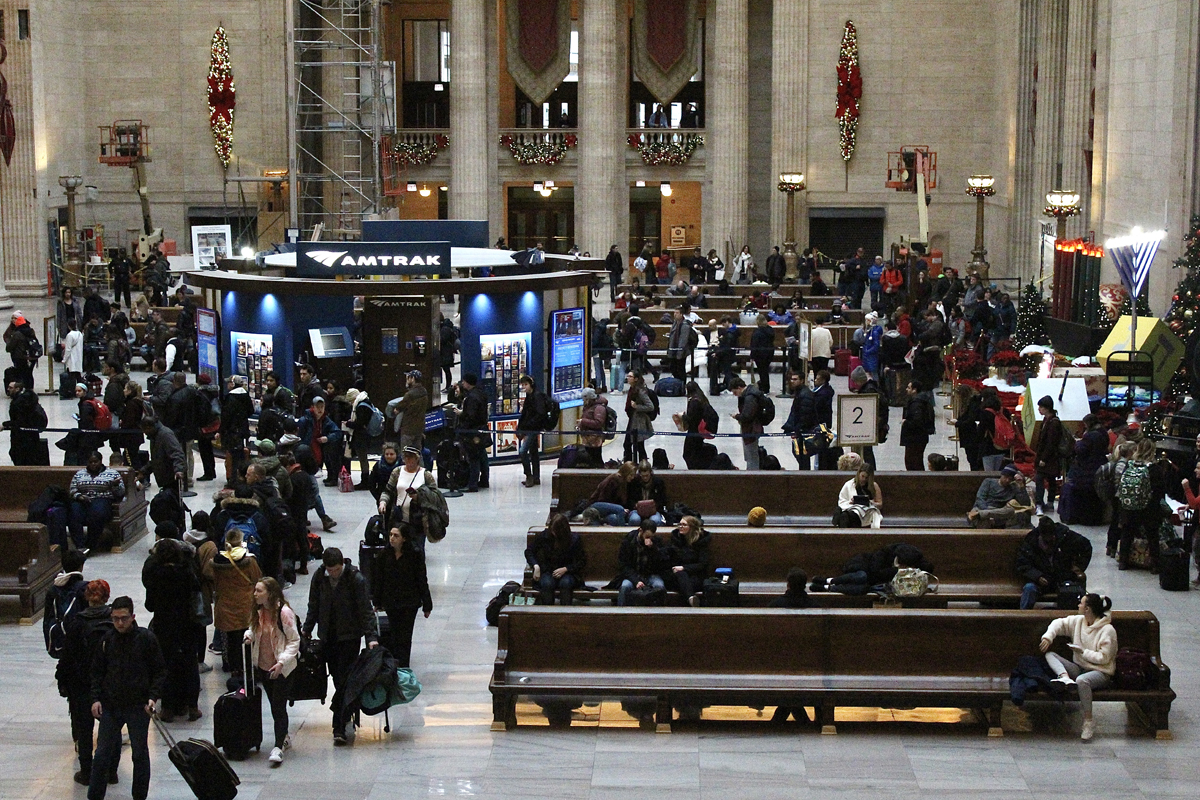
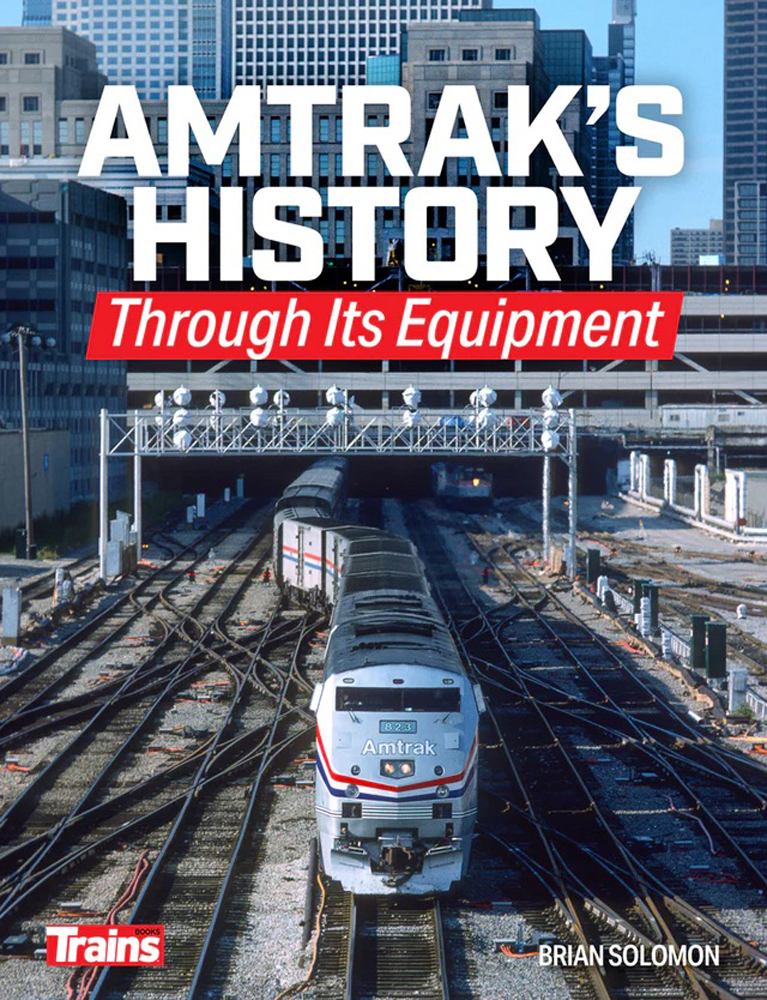
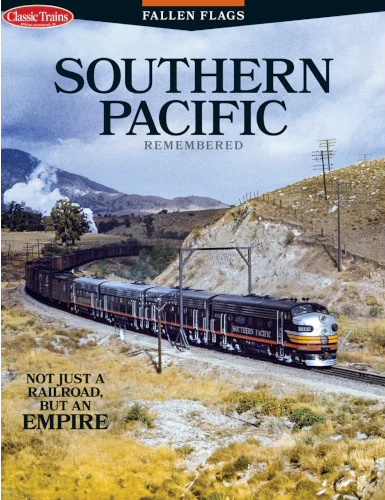
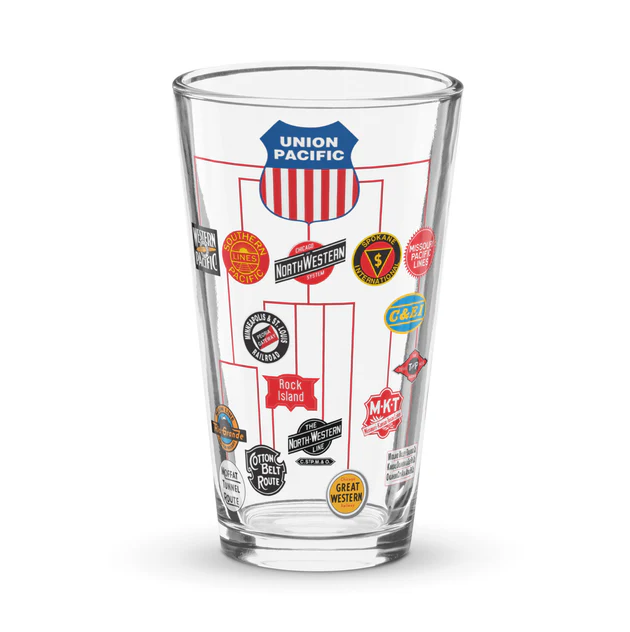
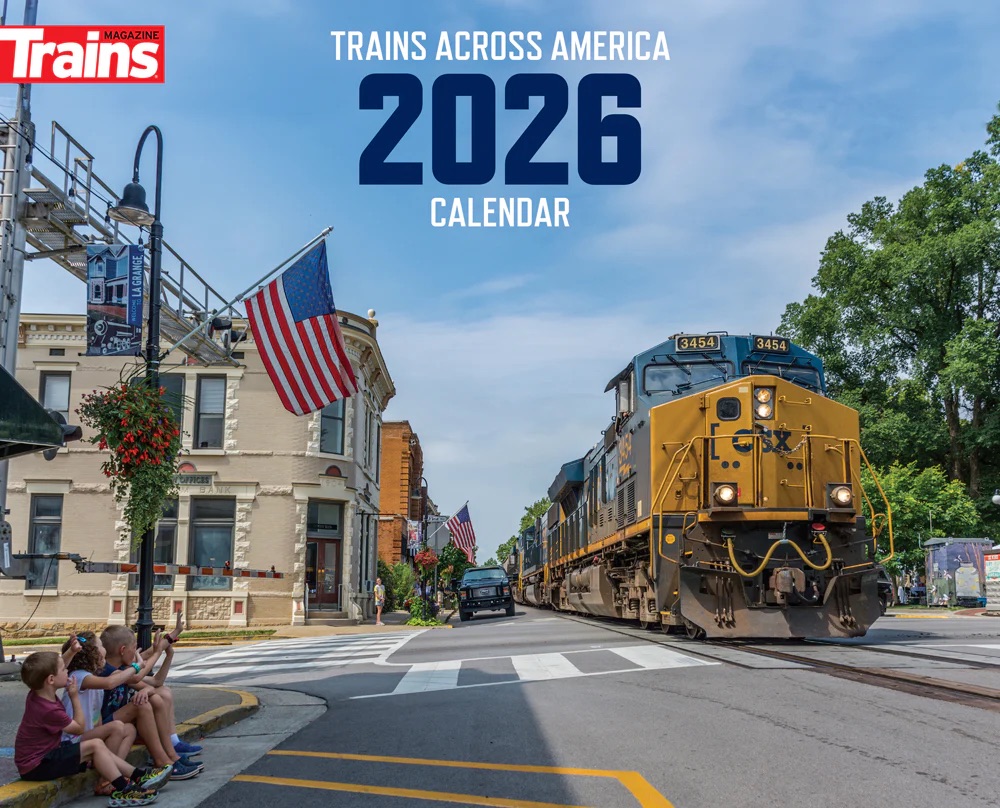
It would be nice to know why CSX chose to run the southbound freight train past Harbiin. Unless the crew was running short on time there would seem to be no excuse other than bad train dispatching weather unintentional or intentional to delay the northbound train. I guess time will tell based on CSX’s future performance. But now that the passenger train desk at the STB has been disbanded who ya gonna complain too?
Amtrak is in serious need of new cab cars… Viva Airo trainsets!
Dr. Güntürk Üstün
Yes. Thumbs up on your post. Dr. G.
Got locomotives on both ends because their is NO turning Y near the Mobile station. Also because the Chargers are equal to FORD’s in reliability, (Found On Road Dead).
Next to Bay St. Louis station is a siding that is sometimes used store some maintenance of way equipment. Amtrak “SHOULD have had CSX bring East Bound into the station and let the passengers board then move train into that siding till the Westbound trains cleared. I dropped off some friends riding to Mobile and the wait was so long that they could have made Harbin siding with ease. Passengers would have been in the seated comfort of the cars air conditioning instead of sweating in 90 degree weather on the platform.
Lastly, L & N/Seaboard/CSX has taken up half the passing sidings along this route since the Pan American/Gulf Wind were discontinued at the start of Amtrak. Between the Nicholson siding west of Bay St. Louis and the siding just east of Ocean Springs (a little over 40 miles), only 2 long siding exist (Harbin and in Biloxi). They also took out most of the double tracking from Theodore, AL to downtown Mobile even though they have a few industrial complexes out that way.
And, by the way, walked about a quarter mile of the CSX line around Bay St. Louis. At least a quarter of the ties need to be replaces because they are rotted out, split, and can’t properly hold spikes. Deferring maintenance to give the money to Wall Street.
Off and running…even if a few minutes late. Thank you CSX for your memory lapse and PSR adherence. It will hopefully get the start-up kinks worked out quickly. It’s still hard to believe these very tracks handled sixteen daily passenger trains ON Time and still ran their freight trains. Technology is shining at the CSX…lol
Looking at the photo one must assume that both Siemens locomotives are live, not derated cab cars. Perhaps this was an inauguration-day attempt at a matched set, or maybe Amtrak has a shortage of cab cars. What I call it is a colossal waste of money and energy. Amtrak has dozens of push-pull trains – most or all of the Chicago corridors and the Borealis ad other locations. Isn’t it long past time for purpose-built cab cars with baggage capacity and/or seating and/or handicap seating with appropriate toilets.
One is told some are on order for delivery sometime in the future. Well, Amtrak is, as we speak, 54 years, 3 months and 18 days old.
Europe has cab cars in all the countries I’ve traveled in so they are available for purchase. However, I don’t know if theirs meet US rail safety standards.
Besides the Airo cab cars mentioned by the good Doctor, which do seem to be available separate from a full trainset, Amtrak has started converting some of their P42’s into cab cars. The upside is obvious since they already own them and can use them for HEP as well; the downside is that their construction means they can’t be used for anything else, like baggage storage, without compromising the body structure. Unless someone figures out how to get extremely creative, that is.